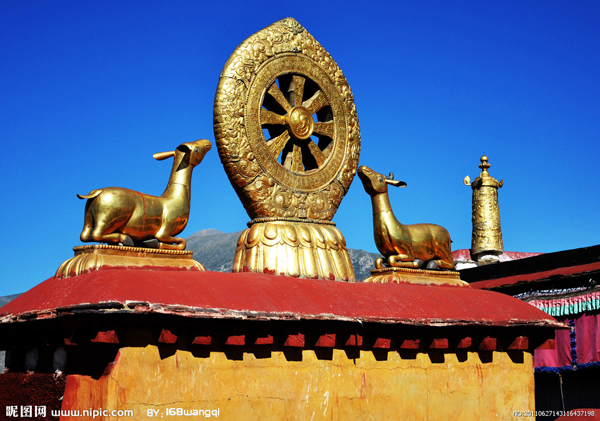Tibet is a sacred place for Buddhists. On the north ring line of Tibet, there are some monasteries that pilgrims and tourists must visit, of which some are the starting point of Lhasa, the regional capital of Tibet, some is the largest Buddhist temple in the world and some is the place where the reincarnation of living Buddha begins.
![Jokhang Temple: The Jokhang Temple comes before the Lhasa city. [Photo/ nipic]](./W020111228558689184904.jpg)
Jokhang Temple: The Jokhang Temple comes before the Lhasa city. [Photo/ nipic]
1. Jokhang Temple: The Jokhang Temple comes before the Lhasa city.
Religious status: it is the ultimate pilgrimage destination for Tibetan Pilgrims
Established years: 647 AD
Most prominent feature: Tibet's most brilliant existing building from the gilded era of Tubo.
Treasure of the temple: the statue of Sakyamuni at age of twelve.

Jokhang Temple: The Jokhang Temple comes before the Lhasa city. [Photo/ nipic]
1300 years ago, when the site of Lhasa city was still a place of wasteland, Princess Burikuti from Nepal asked Gampo to build a temple to house the statue of Sakyamuni at age of eight that she brought from her hometown. According to the legend, a lake site was chosen after many failed attempts to build a temple in the region. Prior to this, every time a temple was built, it would collapse. Confused by this phenomenon, Princess Bhrikuti turned to Wen Cheng for help. Wen Cheng told the Princess that the geography of Tibet was very much like a hag, with the lake at the heart. In order to build the temple, Wen Cheng advised they must demolish the hag by filling and leveling the lake using 1,000 goats to carry soil from a mountain far away. When the temple was done, it was called Ra-Sa-Vphrul-Snang ('ra' meaning goat and 'sa' meaning earth in Tibetan) to commemorate those goats. This temple became an inseparable part of Tibetan history and culture. The city of Ra-Sa grew around the temple and over time, become known as Lhasa, a holy land.
Now, the Jokhang Temple covers an area of 25100 square meters. There are five golden tops, 108 Buddha halls, and various treasures. It enshrines all the images and statues of the Buddha of the five sects of Tibetan Buddhism and Bon sect. pilgrims flock to the temple all year around.
